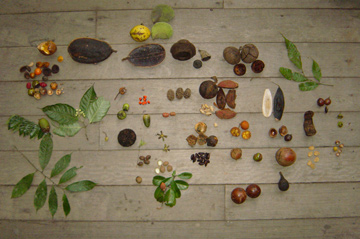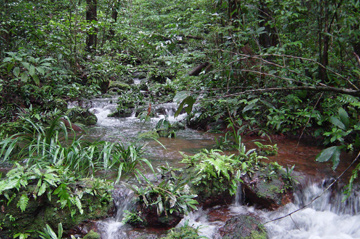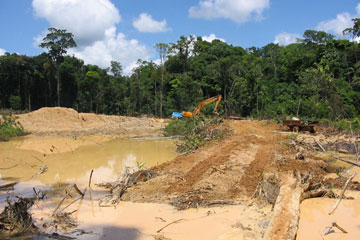France blocks controversial rainforest gold mine in French Guiana
France blocks controversial rainforest gold mine in French Guiana
Rhett Butler, mongabay.com
February 6, 2008
Environmentalists declared victory after the French government blocked approval of a controversial gold mine bordering the Kaw wetland, an ecologically rich site in French Guiana. The decision was handed down last week following an environmental assessment by the Ministry of Ecology and Sustainable Development [Ministère de l’Ecologie du Développement et Aménagement Durables – MEDAD] based on work by local scientists.
IAMGOLD, a Toronto based mining and exploration company, had been seeking to develop gold deposits in the Kaw Mountain region of French Guiana, an overseas department of France located on the northeastern coast of South America. The proposed concession bordered Trésor — a rainforest reserve that houses protected wildlife — and is close to Kaw swamp, a Ramsar-listed wetland. The Kaw Mountain area is home to 700 plant species, almost 100 species of mammals and 254 species of birds, according to the IUCN.
Mine opponents — including a coalition of environmentalists, indigenous rights’ groups, and some scientists said the project could result in forest clearing, contamination of groundwater and soils with heavy metals and other toxic substances, and erosion and sedimentation of local waterways. The project also threatened the area’s high levels of biodiversity — a risk highlighted in a report by French scientists.

Sampling of fruit diversity at Kaw mountain. Photos by Dr. Pierre-Michel Forget. |
“According to the conclusions of Grenelle the environment, we conducted a very thorough analysis of this issue. It appeared that the Kaw Mountain site has an exceptional biodiversity and may even be regarded as a wildlife sanctuary. Despite the quality of the IAMGOLD group, this project cannot be conducted in such a place,” said Jean-Louis Borloo of MEDAD. “Based on these conclusions, I ask that the level of protection enjoyed by the site be increased.”
Dr. Pierre-Michel Forget, a biologist from the Muséum National d’Histoire Naturelle in Brunoy, France who has worked in the region for more than 20 years, says that IAMGOLD failed to account for the biological richness of the Kaw region.
“We clearly highlighted and presented data showing that the previous pre-project environmental survey was weak as the flora was not correctly inventoried and that there was no adequate tree census,” Forget told mongabay.com. “The open pit mine would have threatened key forest habitat of Kaw… there was also some uncertainty on whether cyanide-laced waste water could flood the Kaw swamp during exceptionally heavy rainfall during the wet season.”

Top image courtesy of Dr. Pierre-Michel Forget, bottom picture courtesy of Les Verts de Guyane |
Forget said the decision to block the project means that Kaw can now become a biological reserve.
“It means that the proposed natural reserve enclosing the entire mountain and swamp of Kaw is now sound as there is no more mine project,” he said. “The area is now open to further eco-tourism development. There is a great potential for tours now.”
Still, Forget warns that further steps are needed to ensure Kaw’s biodiversity is indeed protected.
“Hunting in Kaw now becomes the focus,” he said. “National Natural Reserve status is needed for the entire area with to prevent hunting pressure. Strong enforcement is needed.”
A statement from the French government seemed to indicate its interest in protecting the site for the future.
“Guyane is one of the last great forests in the world that is not fragmented by human activities,” said MEDAD in a statement. “There are several thousand species of plants, and hundreds of species of mammals, birds, fish, amphibians and reptiles.”
“French Guiana hosts an exceptional ecological heritage. The French Government is aware of its responsibility and aims to be exemplary while preserving biodiversity,” concluded Borloo.








